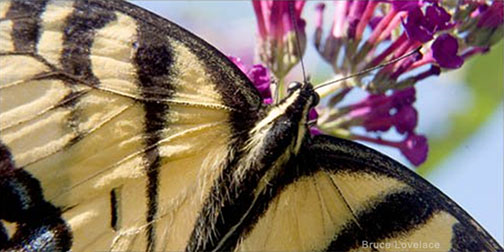HOW TO POSTS: LIGHTING AND COMPOSITION
macro photography tricks for photographing insects
Are you thinking of shooting some close ups of bugs? You need a few macro photography tricks specifically for insects because success at taking close-ups of insects has a few unique challenges?
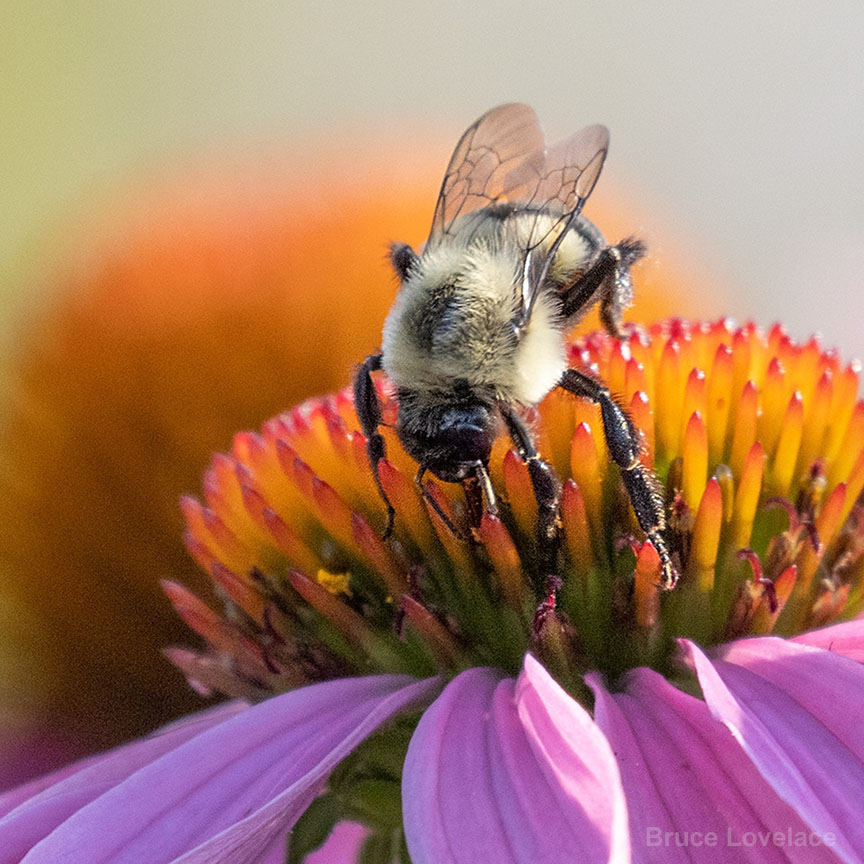 Bee on Cone Flower
Bee on Cone FlowerTaken in direct, but slightly diffused sunlight
hand held with a 100-400mm lens using a high shutter speed.
This post covers basics tips on macro lighting, background, and equipment, but also covers the where and how-to tricks for insect macro photography.
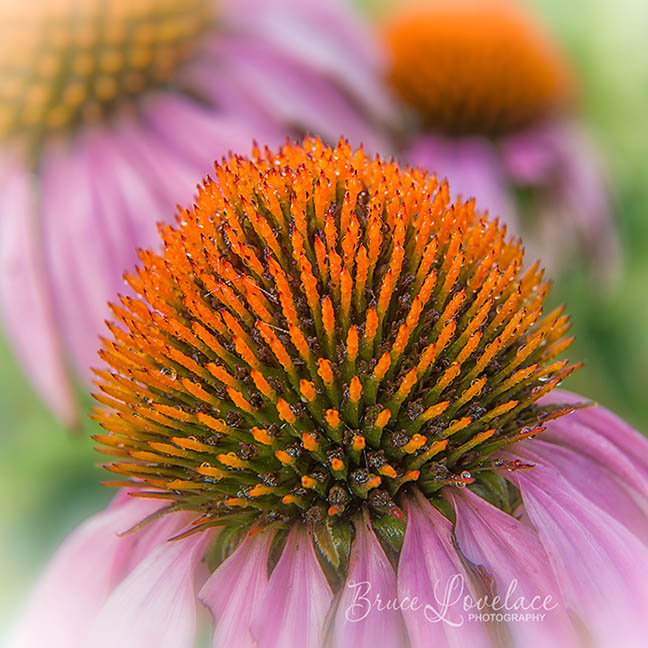 A "bug-less" close-up of a cone flower.
A "bug-less" close-up of a cone flower.This macro shot was taken in the subdued light of shade,
around sunrise, and didn't involve a moving target to chase after.
I've collected a bunch of macro tricks from my own experiences. Then I combined them with some tricks from other very talented and famous macro photographers that I have learned from. The result is useful tactics for you to take some memorable photographs up close and personal in the world of bugs.
A trick is defined as a "cunning or skillful act or scheme intended to deceive or outwit someone." I want you to learn a few skillful acts and inspire you to create some spectacular close-up photos of insects.
where to find insects for macro photography
- Macro photography bugs are most easily found near lakes, ponds, tall grasses, and marshy areas. Overgrown fields with nearby water sources are perfect.
- Spring and early summer are the best seasons for insects to be plentiful.
- Insects are least active early in the morning and later in the evening when the temperature is cooler and their movements are slower.
- The more remote and the more wild the area the more diverse and plentiful will be the supply of good macro insect photography targets.
where to buy bugs to photograph
Buying insects for photographic purposes is likely not even on the radar for some insect photographers, but there are options for this with pluses and minuses to consider. You have options of buying live bugs, dead bugs, and even artificially made bugs.
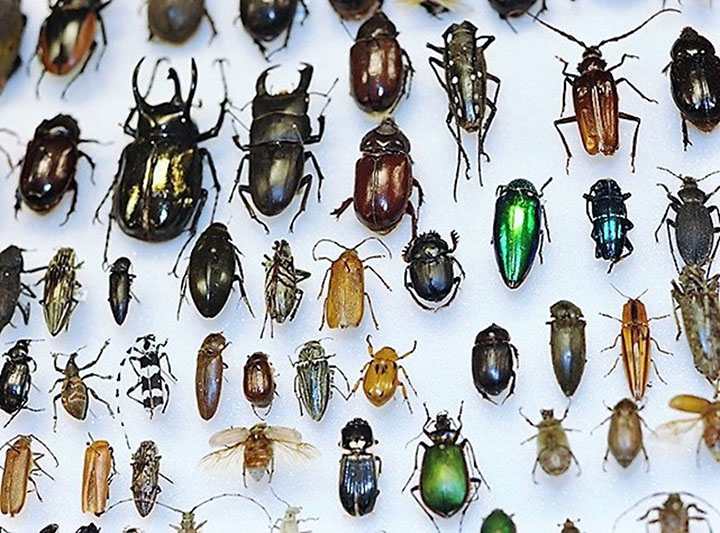 You can buy an assorted mix of dried bugs to photograph on Etsy
You can buy an assorted mix of dried bugs to photograph on EtsyThe big advantage of buying dried bugs is that they will stay exactly where you want. You can position them for the best composition and the best background.
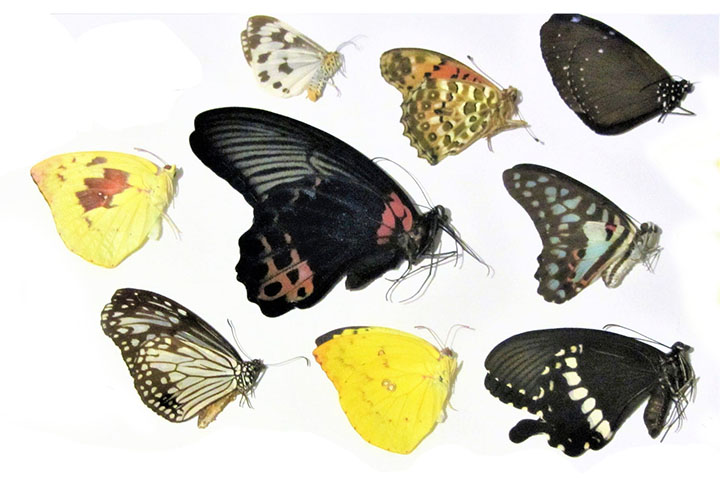 You can buy dead butterflies in remarkable condition for macro photos
You can buy dead butterflies in remarkable condition for macro photosOne way you can be sure to get sharp photos of butterflies is to use butterflies that can no longer move on their own.
get the macro lighting right
Photography has often been defined as "painting with light" and the importance of lighting in macro photography cannot be over emphasized.
Not only the amount of light to give you the right sharpness and depth of field, but also the direction, contrast, and quality of light work together to reveal your subject in way that makes your photo have impact or not.
quick tips on macro photography lighting
There are two important lighting aspects involved with the photography of insects. They are the amount of light and the characteristics of light.
QUANTITY. Get enough light. Use a flash or LCD panel to increase the light on your insect. Duh, this sounds like Captain Obvious speaking, but more light gives you more options. When you have loads of light you can:
- Shoot lower ISO for less digital noise and the best quality,
- Use smaller aperture for more of your subject in sharp focus ( more depth of field).
- Use a higher shutter speed for eliminating any blur from camera or subject movement during the exposure.
QUALITY. Modify the light. If it it ain't just right, fix it.
- Use a bounce reflector to fill light into the shadows,
- Change the time of day for your outdoor shoot for completely different looking results,
- Use a diffusion sheet or light box for more even, soft shadows,
- Move your subject to a better location where the lighting will be different.
As an Amazon affiliate I may receive a small commission from qualifying purchases, at NO added cost to you.
As an example, look at the comparison of the close-up photos below when a simple change in the lighting is made.
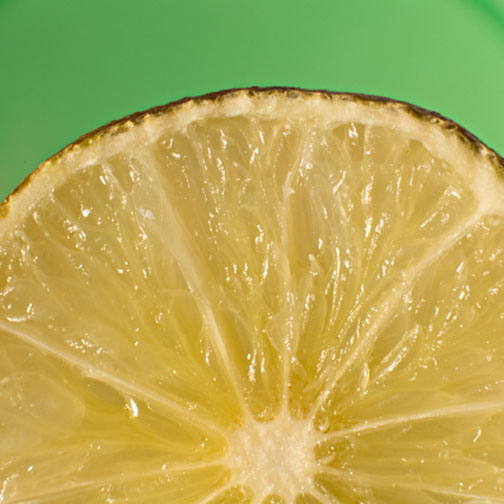 Front lighting
Front lighting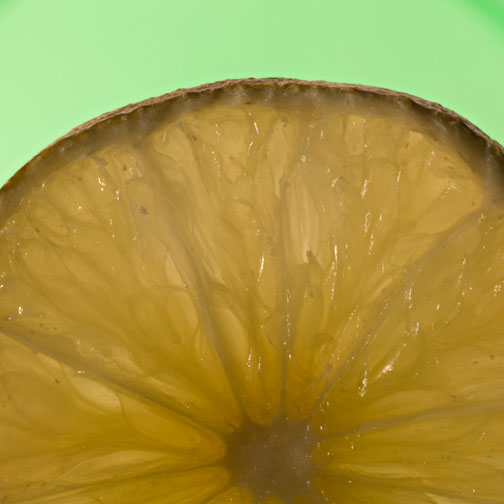 Back lighting
Back lightingHere is an example of how modifying your macro photography lighting completely changes your image. I simply turned off my main light hitting the front of the subject, adjusted the exposure, and got the back-lit photo on the right as a result.
pick the right macro photography lighting equipment
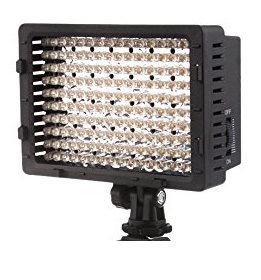 Macro Light Panel
Macro Light PanelI've written quite a bit about the many tools available to you elsewhere on this website especially in the relatively new world of digital photography.
There is a balance between getting the right tool for the job and not wasting money on lighting equipment and accessories that aren't necessary.
So these maybe might not be considered macro photography tricks at all, but these ideas should help you get inspired to start. Here's more on some of the lighting equipment for macro.
control the background in your macro photography
It's easy to focus your lens (and all of your attention) on your main subject and forget to pay attention to the background. This includes the colors, sharpness, contrast, light and amount of sharpness you want the background to have.
This involves the angle you choose, your control of lighting both your subject and it's background, the depth of field, the distance to the background and any changes in the background itself.
Although it's not macro insect photography, check out the example below.
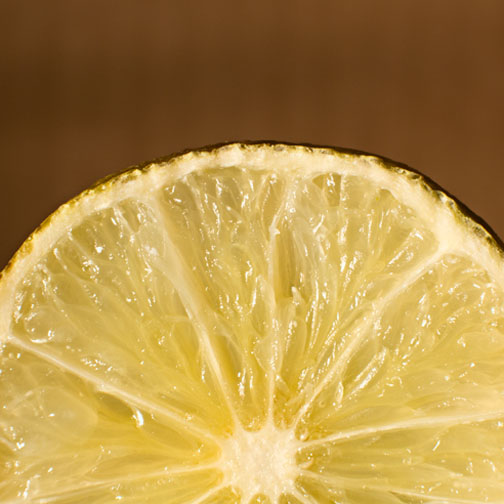 |
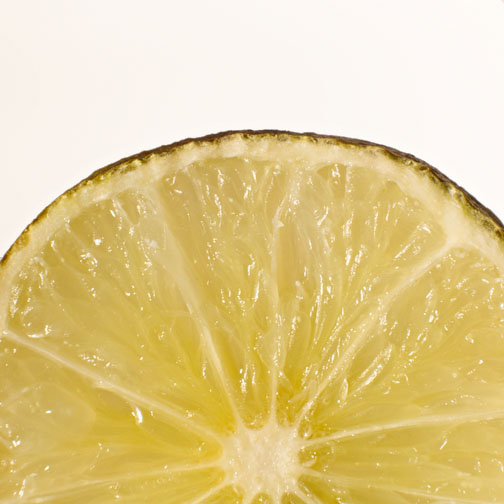 |
The photo on the left has the brown cardboard background that I use when photography black-colored cameras, lenses, and other accessories. Changing the background to a white background with a back-light made it a much improved photograph.
Using a fresher lime without the distracting dark, aging skin would have made it a little better still.
tips on your macro background
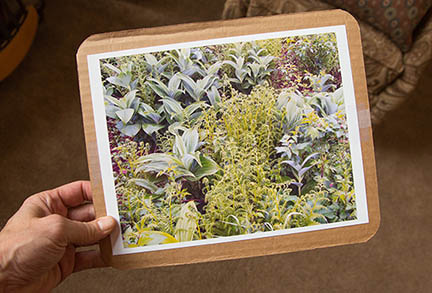 Bug Photo Background
Bug Photo BackgroundThere are three ways to change the appearance of the background behind your close-up photo of your insect.
- Add or subtract the amount of light on the background by blocking it or by reflecting light onto the area behind your bug.
- Change your camera angle. Even a slight change in the angle you take can completely change the appearance of the background.
- Use your own background. I rarely do this with my nature macro shots but it is easy to do and a lot of nature photography instructors teach this technique. With macro photography it's very easy to carry a few different cards with various, appropriately colored tones to slide into place behind your subject.
quick macro photography tricks on equipment
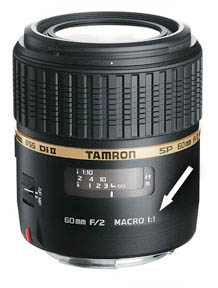 Macro Camera Lens
Macro Camera Lens- Keep it simple. The simpler your set-up is, the more you can concentrate on lighting and composition. You won't get great macro photos unless you are smart about using the right settings, framing in your image aesthetically, and lighting it right.
- Consider the options. Learn a bit about your Macro Photography Equipment and accessories before you start.
- Optical options. Go to Macro Photography Lenses for more information on your optical options for macro photography.
How to get sharp macro photos of insects
- Use mirror lock-up. Residual camera shake is possible from the mirror flipping up just before exposure is made with a DSLR. This is usually not a big deal for most modern cameras and only rarely comes into play with short exposures.
- Use a fast shutter speed. By handling the lighting and camera settings correctly a fast shutter speed will eliminate motion blur from your camera and/or your subject.
- Use the self-timer. This is just another alternative technique to keep the camera steady.If you are using a tripod, don't use the regular shutter button. Either use the self-timer function or a remote or cable release to avoid camera shake.
Macro photography tricks are like any other digital photography tip. You've got to pick the right ones for the photographic situation you are in.
summary of tips for shooting macro photos of insects
Bugs and Flowers. Not only do they go together in nature, but they're also the most popular photography subjects for macro shooters. Here are some insider secrets to getting great close-ups.
- Take your time. If you're in a hurry, delay your insect photography for another time when you have enough time. Bugs often fly off just when you're getting ready to snap away. Be patient, they usually come back to the same area.
- Smaller bugs don't get spooked as easily as big bugs and tend to stay put because they are more likely to tolerate cameras lurking nearby.
- Set your alarm clock early in the day for 2 reasons. Bugs move slower when it's cooler before the hot sun warms them up. Secondly, the air is calm and you'll avoid the challenges that come along with macro photography and the wind.
- Avoid the harsh shadows of the direct sun. While it can give you nice fast shutter speed, the sun's harsh rays often create distinct shadows. Try finding an open shade area or use a diffuser.
I hope this post inspires you to try your hand at shooting macro photography of insects. For related posts, see the links below my signature. To search any topic on this website use the search box below and scroll down through the results.
Search for a new topic on this site:


ABOUT BRUCE LOVELACE
Bruce is the publisher of this website. He is the author of the book "Improve Your Photography Instantly." Read more on Bruce on his Bio Page. He's been known as The Traveling Photographer ever since 1994. Read more about this website.
View some of Bruce's photos on Instagram. Visit the Facebook Page. Watch him on YouTube. Bruce runs photo workshops for kids and adults, and provides one-on-one photography coaching.
Digital Photography Education Location on Google My Business



